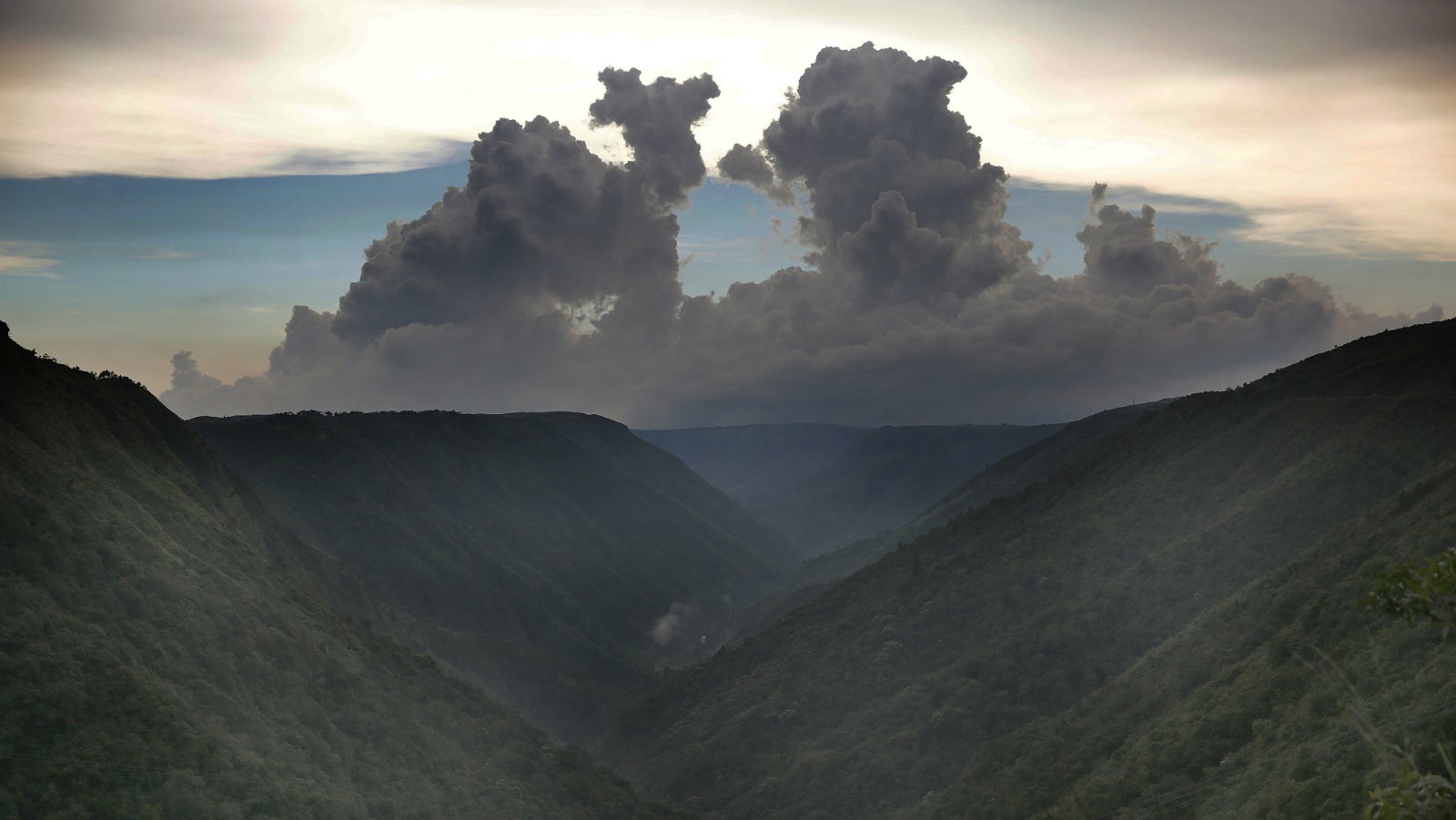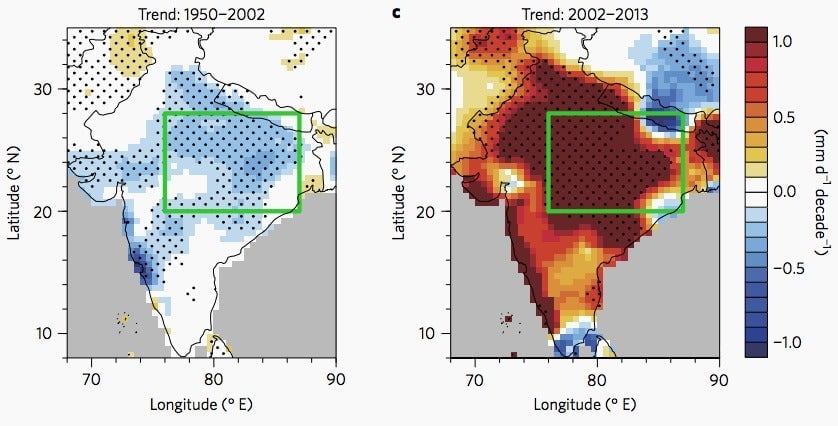After slowly drying up over 50 years, the monsoon is making a comeback in north India
During the second half of the 20th century, the skies above northern central India dried up.


During the second half of the 20th century, the skies above northern central India dried up.
Across vast swathes of Madhya Pradesh, Chhattisgarh, Jharkhand, Bihar, Odisha, and Uttar Pradesh, the monsoon rains between June and September went into decline. Since 1950, the daily rainfall average had dropped by 0.18 millimetres (mm) per decade. This was portentous as the monsoon rains, which account for 80% of the annual rainfall in the subcontinent, are the lifeline for millions of people, agriculture, and livestock. There were even fears that the resultant droughts would become more severe and frequent. A number of theories were proposed to explain this phenomenon of declining rainfall, including large-scale deforestation and pollution.
Then, in 2002, it all changed.
Since that year, the drying trend has reversed, scientists at the Massachusetts Institute of Technology (MIT) found after parsing more than six global precipitation data sets. Starting from 2002, the daily rainfall average in northern central India has increased by 1.34 mm per decade. In fact, the analysis found that, with the exception of southeast India (around Tamil Nadu), monsoon rainfall has increased throughout the subcontinent.
“The Indian monsoon is considered a textbook, clearly defined phenomenon, and we think we know a lot about it, but we don’t,” said Chien Wang, who, along with MIT colleague Qinjian Jin, conducted the study. “Here, we identify a phenomenon that was mostly overlooked.”

This revival was accompanied by a significant change India’s land and sea temperatures, the researchers found. These temperatures are significant because the monsoons are thought to be a result of the unequal heating of the Indian subcontinent and the Indian Ocean. Since 2002, the entire Indian subcontinent has warmed rapidly, data suggests. It has heated up by between 0.1 to 1 degree Celsius per year, while the surface temperature of the Indian Ocean has increased at a much slower rate during this period.
“It is this strong, enhanced warming over land, combined with a slowdown of warming over the Indian Ocean, that has caused the drastic increase in the land-ocean temperature gradient and subsequently resulted in the enhancement of the monsoonal precipitation,” the MIT scientists wrote in a recent article in the Nature Climate Change journal.
Precisely why India’s land temperature has jumped is still unclear, although the researchers have observed a thinning of low-altitude cloud cover over the subcontinent. These clouds typically help reflect sunlight, so any reduction could potentially lead to an increase in surface temperatures. Rising pollution levels may be a reason for a depletion in cloud cover, but the MIT scientists aren’t quite sure yet.
“…these aerosols have been around even during the drying period, so there must be something else at work,” Wang explained. “This raises a lot more questions than answers, and that’s why we’re so excited to figure this out.”